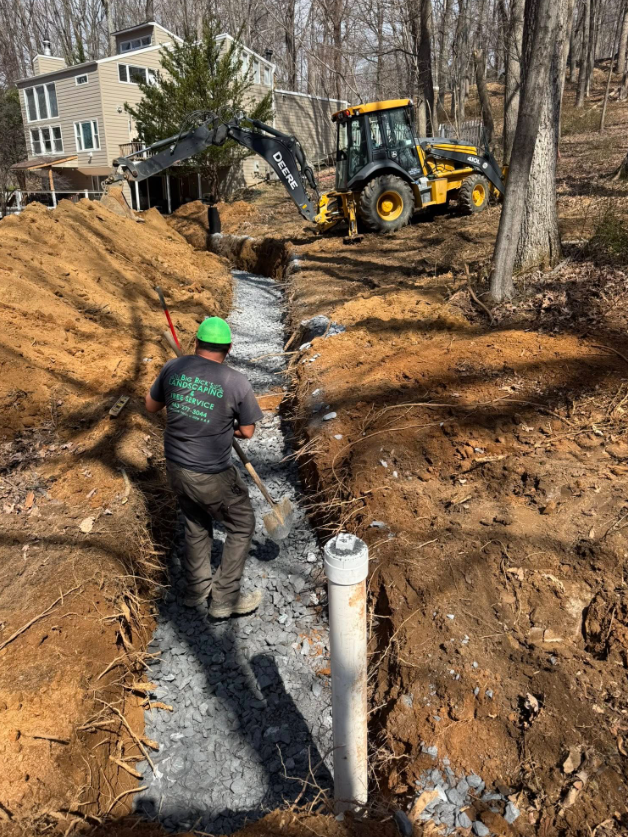What to Do If Your Septic System Fails an Inspection
When a septic system fails an inspection, it can be stressful. Whether you’re selling a house, trying to get a permit, or just concerned about safety and environmental impact — failure isn’t the end of the world. With prompt action, expert help, and a plan, you can bring your system back into compliance and avoid further damage or cost. Below, Colson’s Septic Services walks you through what to do if you discover during an inspection that your septic system did not pass.
- Understand the Report
- Read the inspection results carefully. Inspectors will usually list what failed: is it the tank, the drain field, baffles, plumbing connections, soil absorptive capacities, or other components?
- Ask questions if anything is unclear. Terms like “leach field failure,” “backflow,” “excessive effluent at surface,” or “baffles missing or damaged” might sound technical. Knowing exactly what failed is the first step toward fixing it.
- Assess the Severity & Risks
- Is there a leak? If sewage is surfacing or backing up into the home, that’s a health hazard and likely an urgent repair.
- Is the failure environmental? If wastewater is reaching groundwater or streams, local regulations may require immediate action.
- Is it a structural issue or just maintenance? Sometimes failures are due to overdue pumping, clogged inlets or outlets, or minor damage — easier to fix. Other times, the damage is more extensive or has been neglected for a while.
- Contact an Experienced Septic Professional
Colson’s Septic Services has over 30 years of experience in septic repair, pumping, installation, and evaluations in Carroll, Howard, Frederick, Baltimore & Montgomery Counties. We can help you:
- Diagnose the precise causes of failure
- Estimate repair vs replacement costs
- Help you understand what local codes or regulations require
- Plan remediation steps
As with any major inspection failure, you’ll want someone who knows the ins and outs of local county requirements, soil conditions, and best practices — someone like us.
- Decide: Repair, Replace, or Upgrade
Depending on how old the system is, how badly it’s failed, and the cost to fix, you may have several options:
| Option | When It Makes Sense | Pros | Cons |
| Repair parts of the system (e.g. replace baffles, fix leaks, unclog lines) | If damage is localized, repairable, and meets code once fixed | Lower cost; less disturbance | It might be temporary if other parts are old or degraded |
| Replace components (drain field, tank, piping) | If parts are beyond repair, or failure is widespread | Longer-term solution; can improve performance | Higher cost, more disruption to property |
| Full system replacement or upgrade | If the system is old, cannot meet current codes, or soil/permitting demands have changed | Compliance, peace of mind, and often better performance | Significant investment, possibly more permitting required |
- Obtain Permits & Comply With Local Codes
Failing a septic inspection often triggers regulatory requirements: repairs or replacements must meet local health, environmental, and building codes.
- Get the required permits before doing major work.
- Make sure the new or repaired parts are inspected once installed.
- If you live in a county served by Colson’s Septic (Carroll, Howard, Frederick, Baltimore, or Montgomery in MD), we’re familiar with the permitting and code expectations there.
- Budget and Plan the Work
- Get multiple estimates, especially for larger jobs (like replacing a drain field).
- Ask what is included: cost of materials, labor, restoration of landscaping, excavation, and disposal.
- Consider phasing work if the budget is tight — sometimes repairs can be staged without violating code.
- Prevent Future Failures
Once your system is repaired or replaced, keeping it in good shape is critical.
- Pump your septic tank regularly (every 3–5 years is common, sometimes sooner depending on size and use).
- Avoid flushing or putting down non-biodegradable items, harsh chemicals, or grease.
- Conserve water; repair leaks and spread out high-water uses (dishwashers, laundry).
- Maintain the drain field: don’t park or build over it; ensure runoff doesn’t flood it.
- Schedule inspections or evaluations proactively, especially before selling or major real estate transactions.
- Work with Colson’s Septic for Support
At Colson’s Septic Services, we can help every step of the way — from understanding the inspection report, diagnosing failures, advising on repair vs replacement, to getting your system up to code and staying there. With over 30 years of experience serving central Maryland, we know the soil, the counties, and what it takes. Our goal is to make sure your system is safe, compliant, and lasts reliably.
Conclusion
A failed septic inspection isn’t the end — it’s an opportunity to address problems before they get worse. By understanding what failed, working with professionals, making a good decision, and committing to regular maintenance, you can bring your septic system back to healthy working order. If you are in Westminster, Carroll, Howard, Frederick, Baltimore, or Montgomery County in Maryland and facing a failed septic inspection, we at Colson’s Septic are here to help — contact us to schedule an evaluation or estimate.


